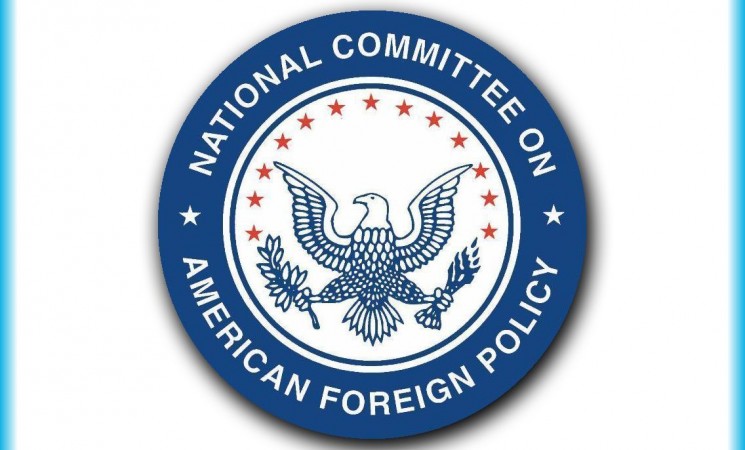Introduction: The relationship between the United States, China and Taiwan is one of the most consequential triangles in global politics. A stable and cooperative triangle, and especially continued stability in cross-Strait relations, would help ensure peace and stability in the Asia-Pacific region, a region destined to become the most important part of the global system in the 21st century. Stable triangular relations would remove one of the major obstacles to a more cooperative relationship between China and the United States. Stable relations would also contribute to the institutionalization of the status-quo in the Taiwan Strait, an outcome favored by the great majority of the people in Taiwan.
Although the triangular relationship has shown remarkable improvement since 2008, its long range future still remains uncertain. As Richard Bush has written in his seminal work, "Uncharted Strait: The Future of China-Taiwan Relations," (Brookings, 2013):
Introduction: The relationship between the United States, China and Taiwan is one of the most consequential triangles in global politics. A stable and cooperative triangle, and especially continued stability in cross-Strait relations, would help ensure peace and stability in the Asia-Pacific region, a region destined to become the most important part of the global system in the 21st century. Stable triangular relations would remove one of the major obstacles to a more cooperative relationship between China and the United States. Stable relations would also contribute to the institutionalization of the status-quo in the Taiwan Strait, an outcome favored by the great majority of the people in Taiwan.
Although the triangular relationship has shown remarkable improvement since 2008, its long range future still remains uncertain. As Richard Bush has written in his seminal work, "Uncharted Strait: The Future of China-Taiwan Relations," (Brookings, 2013):
-The future of the Taiwan Strait is more wide open than at any other time in recent decades. Tensions between China and Taiwan have eased since 2008. But the movement toward full rapprochement remains fragile. Whether the two sides of the Strait can sustain and expand a cooperative relationship after years of mutual distrust and fear is still uncertain.
-The waters of the Strait are uncharted, and each side worries about shoals beneath the surface... China fears the island's permanent separation, by way of either an overt move to de jure independence or continued refusal to unify with the mainland. Taiwan fears subordination to an authoritarian regime that does not have Taipei's interestsat heart. And the United States worries about the stability of the East Asian region.
The United States has a huge stake in the continued stabilization of cross-Strait relations because of its interests in maintaining peace and stability in the critically important East Asia region.
For more than a decade, since the Taiwan Strait crisis of 1995-96, which brought the United States and China close to war in the Strait, the NCAFP has been sponsoring a trilateral Track II U.S.-China-Taiwan strategic dialogue which aims to promote frank exchanges and to increase mutual understanding among all three sides, while helping to chart a path forward.
The most recent trilateral dialogue was held in New York on January 22-23, 2014. It brought together an influential group of analysts and officials from all three sides. The list of participants and the agenda is included in the appendix.
One of the key issues discussed at the trilateral was the potential obstacles to continued cross-Strait stabilization and the steps that the three sides might each take to overcome such obstacles. There were a variety of views on all three sides. The majority of participants on each side were cautiously optimistic about the potential for continued cross-Strait stability, but several participants pointed to potential dangers that need to be avoided.
The following report draws on the discussion at the trilateral but represents primarily the conclusion of the author.
The future of the Taiwan Strait is more wide open than at any other time in recent decades. Tensions between China and Taiwan have eased since 2008. But the movement toward full rapprochement remains fragile. Whether the two sides of the Strait can sustain and expand a cooperative relationship after years of mutual distrust and fear is still uncertain.
The waters of the Strait are uncharted, and each side worries about shoals beneath the surface... China fears the island's permanent separation, by way of either an overt move to de jure independence or continued refusal to unify with the mainland. Taiwan fears subordination to an authoritarian regime that does not have Taipei's interestsat heart. And the United States worries about the stability of the East Asian region.
The United States has a huge stake in the continued stabilization of cross-Strait relations because of its interests in maintaining peace and stability in the critically important East Asia region.
For more than a decade, since the Taiwan Strait crisis of 1995-96, which brought the United States and China close to war in the Strait, the NCAFP has been sponsoring a trilateral Track II U.S.-China-Taiwan strategic dialogue which aims to promote frank exchanges and to increase mutual understanding among all three sides, while helping to chart a path forward.
The most recent trilateral dialogue was held in New York on January 22-23, 2014. It brought together an influential group of analysts and officials from all three sides. The list of participants and the agenda is included in the appendix.
One of the key issues discussed at the trilateral was the potential obstacles to continued cross-Strait stabilization and the steps that the three sides might each take to overcome such obstacles. There were a variety of views on all three sides. The majority of participants on each side were cautiously optimistic about the potential for continued cross-Strait stability, but several participants pointed to potential dangers that need to be avoided.
The following report draws on the discussion at the trilateral but represents primarily the conclusion of the author.
To view a PDF of this report, please click here.

